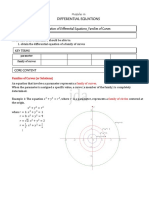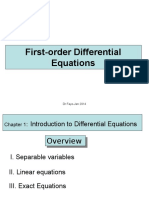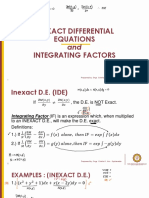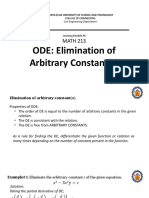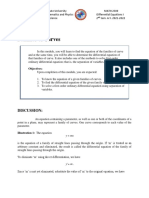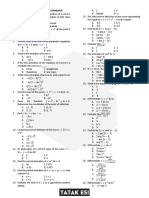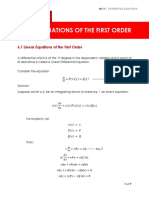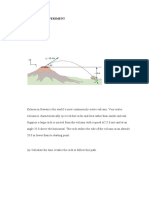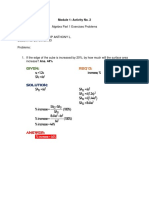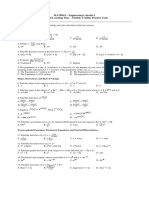0% found this document useful (0 votes)
563 views11 pagesMath151 Module 2
This document provides an overview of Module 2 of the course Math 151: Elementary Differential Equations. The module covers separation of variables and homogeneous equations. The key learning objectives are to examine solutions to first-order differential equations, identify equations that are separable, transform equations to separable form and solve them, and obtain general and particular solutions to separable and homogeneous equations. Examples are provided to demonstrate solving separable differential equations using separation of variables and obtaining general solutions.
Uploaded by
Yanni BarrientosCopyright
© © All Rights Reserved
We take content rights seriously. If you suspect this is your content, claim it here.
Available Formats
Download as PDF, TXT or read online on Scribd
0% found this document useful (0 votes)
563 views11 pagesMath151 Module 2
This document provides an overview of Module 2 of the course Math 151: Elementary Differential Equations. The module covers separation of variables and homogeneous equations. The key learning objectives are to examine solutions to first-order differential equations, identify equations that are separable, transform equations to separable form and solve them, and obtain general and particular solutions to separable and homogeneous equations. Examples are provided to demonstrate solving separable differential equations using separation of variables and obtaining general solutions.
Uploaded by
Yanni BarrientosCopyright
© © All Rights Reserved
We take content rights seriously. If you suspect this is your content, claim it here.
Available Formats
Download as PDF, TXT or read online on Scribd
/ 11






